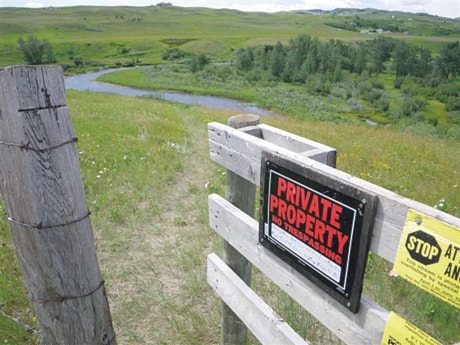Over the years I’ve found that nothing reaps reader outrage quite like writing anything – good or bad – about various varmints: coyotes, squirrels, so-called wild horses, etc.
In the U.S., wild horses are frequently called “mustangs,” from the Spanish “mestengo” — stray animals — and are widely regarded as both an alien species and feral livestock.
Whatever; anyone interested in the many sides of this controversy should check out the Jan./Feb Audubon magazine where one of North America’s most incisive conservation writers, Ted Williams (he also has a regular column in Fly Rod & Reel magazine), in his “Incite” column, sub-titled “Saddle Sore,” writes this, among other things: “Feral horses are out of control in the American west, laying waste to vast tracts of wildlife habitat and imperiling native species. What’s worse, the public seems determined to keep it that way.”
Williams is already being inundated with outrage, so all I’ll write is that I’ve always found it curious, considering the current Alberta government’s on-going crusade against other introduced species (brown, brook, and rainbow trout, pheasants and Hungarian partridge, etc.), how soft and cuddly it is on the subject of wild horses.
One of the most frequent questions readers ask concern strange black rodents sighted in Calgary and as far south as Okotoks. Latest from a reader, whose name my answering machine did not catch, was an amazed-sounding query: could it possibly have been a black squirrel seen recently on a trip to Calgary?
This time I’ll put it in writing in the hopes that the gent sees it, and I’ll tell the truth, not peddle the old urban myth that what he saw was merely a native red squirrel (my personal peskiest of varmints) that had shorted-out a power line.
Around 1930 someone, probably the Calgary zoo, imported some eastern grey squirrels, which, in the squirrelly way of refusing either to be confined or excluded, found suitable habitat and food, even in the absence of their preferred oak groves and acorns. Perhaps it was the change of diet to the seeds of other trees, etc., or simply a dominant melanistic strain, but these squirrels are indeed black, not grey.
When I was a kid growing up in Brooks in the 1940s and ’50s, there were a couple of oak groves near the Eastern Irrigation District offices. On many occasions I saw black squirrels, 130 miles east of Calgary, feasting on the acorns. I don’t know whether either the oak groves, or the black squirrels still exist in my old home town, now become a city.
Categories of varmints are never closed, nor cast in stone. Cougars once were varmints in Alberta and are over-running their range since they were upgraded to game animals several years ago. The Journal of Wildlife Management has recently published the results of a three-year Alberta study showing that cougars kill many more deer, elk, moose and mountain sheep than previously thought, especially during the summer. The article cites data from 1,500 kill sites while tracking 54 cougars with GPS collars.
Most other river-users regard jet boats and their owner-operators as varmints. Now a couple of readers, one a recovering jet boat addict, express concern that the mindless speeding up and down shallow rivers by the jet boats is disturbing and destroying the redds (nests) of spawning brown trout. Maybe we need yet another study?
Certainly there are signs posted along the Red Deer which, under the graffiti, warn mere wading anglers to avoid stepping on or shuffling through redds.
Outdoors people were delighted when Premier Stelmach appointed Ted Morton to cabinet as minister of sustainable resource development, because the MLA, a former professor, was at least a hunter and angler.
But even such a paragon can morph into varminthood. Morton’s big projects to improve hunter and angler access by compensating landowners were widely regarded as illegal paid hunting, pure and simple. What was left of those big plans collapsed after a year, allegedly because of lack of funds; then, as minister of finance, Morton further slashed the funding of his former department, SRD, which had already suffered too many deep cuts in recent years.
But what really turned him into a varmint’s varmint, judging by Internet sites and emails of outdoors people, is Morton’s large part in Bill 36, The Alberta Land Stewardship Act which gives draconian power to the cabinet to extinguish private land and mineral titles, etc., with no compensation, no appeal, and no recourse to the courts.
As if they don’t already have enough public land to give away to their friends, now they’ve given themselves the power to convert our private land into yet more public land to give away.
I can just hear my old alter ego Thorny Razzleberry, who we haven’t heard from in far too long, growling, “ain’t this here Mortimer varmint alleged to be way right? This title extinguisher law is leftier even than Saskite soshulists never dared, maybe even them USSRs.”
Bob Scammell is an award-winning outdoors writer living in Red Deer.
